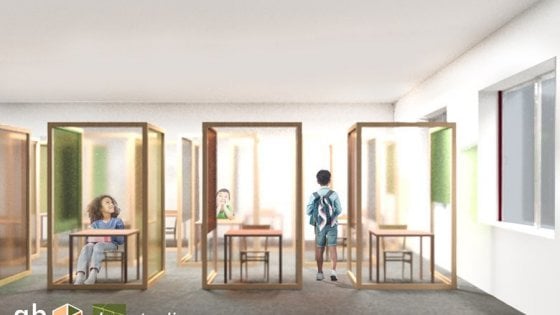The return to school is scheduled for the month of September: in order to contain Coronavirus contagion, Plexiglass panels and separating barriers will probably be installed in the classrooms.
The bell will ring again in September. According to the latest rumors – also confirmed by italian Minister Lucia Azzolina during a videoconference with Prime Minister Giuseppe Conte – pupils of Italian schools of all levels will return in September. The return in classroom, however, will not be like the other years. In order to contain the contagion from Coronavirus, Plexiglas separator panels will most likely be installed in the classrooms. This hypothesis was put forward by the Minister of Education. Depending on the state of the virus – said Azzolina – “to give security to the students will be able to provide plexiglass panels in the classrooms compartmentalized desks and, if necessary, think of tensile structures and light construction works in the outdoor areas of schools. For students, instead of masks, “visors can be used. It will help to meet the needs of students with breathing difficulties”. In the same opinion, Premier Conte said: “The aim is to go back to school all together, in complete safety. We have to go back into presence, look each other in the eyes. We all play an important game at school, let’s talk about the training of our children”.
You might also be interested in —> Coronavirus: here are the anti-contage handles
Plexiglass barriers in the school?
The hypothesis of installing plexiglass barriers in classrooms is bound to cause a lot of controversy. The solution is being examined by experts and has already been applied in other areas, primarily in transport. Aviointeriors, for example, has proposed two interesting plexiglass solutions to limit contagion on aircraft. The first proposal is Glassafe, a kit that can be installed on existing seats. The solution is made of transparent material to limit the sense of constraint and make the cabin harmonious. The transparent panels create an isolated volume around each passenger, limiting interactions via air. This reduces the transport of the virus by air and at the same time the possibility of virus transmission. The second proposal is Janus. The name is derived from Janus, the two-faced god of ancient Rome. Janus consists in reversing the position of the central seat in a triple row. The inversion of the seat and the use of transparent barriers ensure the passenger the same comfort as a common seat. The window side seats and corridors remain positioned in the direction of flight while the central seat is facing the opposite direction. Both solutions can help to limit future contagion without restricting freedom of movement. The SARS-CoV-2 has changed the way we live and the spirit of innovation will be crucial to regain our everyday life.
You might also be interested in —> Coronavirus: a “cabin” to disinfect clothes in the street
